engnetbase.com
Numerical Techniques in Electromagnetics
Numerical Techniques in Electromagnetics
Preface
Acknowledgements
A Note to Students
Contents
Fundamental Concepts
Numerical Techniques in Electromagnetics
Contents
Chapter 1
1.1 Introduction
1.2 Review of Electromagnetic Theory
1.2.1 Electrostatic Fields
1.2.2 Magnetostatic Fields
1.2.3 Time-varying Fields
1.2.4 Boundary Conditions
1.2.5 Wave Equations
1.2.6 Time-varying Potentials
1.2.7 Time-harmonic Fields
1.3 Classification of EM Problems
1.3.1 Classification of Solution Regions
1.3.2 Classification of Differential Equations
1.3.3 Classification of Boundary Conditions
1.4 Some Important Theorems
1.4.1 Superposition Principle
1.4.2 Uniqueness Theorem
References
Problems
Analytical Methods
Numerical Techniques in Electromagnetics
Contents
Chapter 2
2.1 Introduction
2.2 Separation of Variables
2.3 Separation of Variables in Rectangular Coordinates
2.3.1 Laplace’s Equations
Example 2.2
2.3.2 Wave Equation
2.4 Separation of Variables in Cylindrical Coordinates
2.4.1 Laplace’s Equation
2.4.2 Wave Equation
2.5 Separation of Variables in Spherical Coordinates
2.5.1 Laplace’s Equation
2.5.2 Wave Equation
2.6 Some Useful Orthogonal Functions
2.7 Series Expansion
2.7.1 Poisson’s Equation in a Cube
2.7.2 Poisson’s Equation in a Cylinder
2.7.3 Strip Transmission Line
2.8 Practical Applications
2.8.1 Scattering by Dielectric Sphere
2.8.2 Scattering Cross Sections
2.9 Attenuation Due to Raindrops
2.10 Concluding Remarks
References
Problems
Finite Difference Methods
Numerical Techniques in Electromagnetics
Contents
Chapter 3
3.1 Introduction
3.2 Finite Difference Schemes
3.3 Finite Differencing of Parabolic PDEs
3.4 Finite Differencing of Hyperbolic PDEs
3.5 Finite Differencing of Elliptic PDEs
3.5.1 Band Matrix Method
3.5.2 Iterative Methods
3.6 Accuracy and Stability of FD Solutions
3.7 Practical Applications I Û Guided Structures
3.7.1 Transmission Lines
3.7.2 Waveguides
3.8 Practical Applications II Û Wave Scattering (FDTD)
3.8.1 YeeÌs Finite Difference Algorithm
3.8.2 Accuracy and Stability
3.8.3 Lattice Truncation Conditions
3.8.4 Initial Fields
3.8.5 Programming Aspects
3.9 Absorbing Boundary Conditions for FDTD
3.10 Finite Differencing for Nonrectangular Systems
3.10.1 Cylindrical Coordinates
3.10.2 Spherical Coordinates
3.11 Numerical Integration
3.11.1 Euler’s Rule
3.11.2 Trapezoidal Rule
3.11.3 Simpson’s Rule
3.11.4 Newton-Cotes Rules
3.11.5 Gaussian Rules
3.11.6 Multiple Integration
3.12 Concluding Remarks
References
Problems
Variational Methods
Numerical Techniques in Electromagnetics
Contents
Chapter 4
4.1 Introduction
4.2 Operators in Linear Spaces
4.3 Calculus of Variations
4.4 Construction of Functionals from PDEs
4.5 Rayleigh-Ritz Method
4.6 Weighted Residual Method
4.6.1 Collocation Method
4.6.2 Subdomain Method
4.6.3 Galerkin Method
4.6.4 Least Squares Method
4.7 Eigenvalue Problems
4.8 Practical Applications
4.9 Concluding Remarks
References
Problems
Moment Methods
Numerical Techniques in Electromagnetics
Contents
Chapter 5
5.1 Introduction
5.2 Integral Equations
5.2.1 Classification of Integral Equations
5.2.2 Connection Between Differential and Integral Equations
5.3 GreenÌs Functions
5.3.1 For Free Space
5.3.2 For Domain with Conducting Boundaries
5.4 Applications I Û Quasi-Static Problems
5.5 Applications II Û Scattering Problems
5.5.1 Scattering by Conducting Cylinder
5.5.2 Scattering by an Arbitrary Array of Parallel Wires
5.6 Applications III Û Radiation Problems
5.6.1 HallenÌs Integral Equation
5.6.2 PocklingtonÌs Integral Equation
5.6.3 Expansion and Weighting Functions
5.7 Applications IV — EM Absorption in the Human Body
5.7.1 Derivation of Integral Equations
5.7.2 Transformation to Matrix Equation (Discretization)
5.7.3 Evaluation of Matrix Elements
5.7.4 Solution of the Matrix Equation
5.8 Concluding Remarks
References
Problems
Finite Element Method
Numerical Techniques in Electromagnetics
Contents
Chapter 6
6.1 Introduction
6.2 Solution of LaplaceÌs Equation
6.2.1 Finite Element Discretization
6.2.2 Element Governing Equations
6.2.3 Assembling of All Elements
6.2.4 Solving the Resulting Equations
6.3 Solution of PoissonÌs Equation
6.3.1 Deriving Element-governing Equations
6.3.2 Solving the Resulting Equations
6.4 Solution of the Wave Equation
6.5 Automatic Mesh Generation I Û Rectangular Domains
6.6 Automatic Mesh Generation II Û Arbitrary Domains
6.6.1 Definition of Blocks
6.6.2 Subdivision of Each Block
6.6.3 Connection of Individual Blocks
6.7 Bandwidth Reduction
6.8 Higher Order Elements
6.8.1 Pascal Triangle
6.8.2 Local Coordinates
6.8.3 Shape Functions
6.8.4 Fundamental Matrices
6.9 Three-Dimensional Elements
6.10 Finite Element Methods for Exterior Problems
6.10.1 Infinite Element Method
6.10.2 Boundary Element Method
6.10.3 Absorbing Boundary Conditions
6.11 Concluding Remarks
References
Problems
Transmission-line-matrix Method
Numerical Techniques in Electromagnetics
Contents
Chapter 7
7.1 Introduction
7.2 Transmission-line Equations
7.3 Solution of Diffusion Equation
7.4 Solution of Wave Equations
7.4.1 Equivalence Between Network and Field Parameters
7.4.2 Dispersion Relation of Propagation Velocity
7.4.3 Scattering Matrix
7.4.4 Boundary Representation
7.4.5 Computation of Fields and Frequency Response
7.4.6 Output Response and Accuracy of Results
7.5 Inhomogeneous and Lossy Media in TLM
7.5.1 General Two-Dimensional Shunt Node
7.5.2 Scattering Matrix
7.5.3 Representation of Lossy Boundaries
7.6 Three-Dimensional TLM Mesh
7.6.1 Series Nodes
7.6.2 Three-Dimensional Node
7.6.3 Boundary Conditions
7.7 Error Sources and Correction
7.7.1 Truncation Error
7.7.2 Coarseness Error
7.7.3 Velocity Error
7.7.4 Misalignment Error
7.8 Absorbing Boundary Conditions
7.9 Concluding Remarks
References
Problems
Monte Carlo Methods
Numerical Techniques in Electromagnetics
Contents
Chapter 8
8.1 Introduction
8.2 Generation of Random Numbers and Variables
8.3 Evaluation of Error
8.4 Numerical Integration
8.4.1 Crude Monte Carlo Integration
8.4.2 Monte Carlo Integration with Antithetic Variates
8.4.3 Improper Integrals
8.5 Solution of Potential Problems
8.5.1 Fixed Random Walk
8.5.2 Floating Random Walk
8.5.3 Exodus Method
8.6 Regional Monte Carlo Methods
8.7 Concluding Remarks
References
Problems
Method of Lines
Numerical Techniques in Electromagnetics
Contents
Chapter 9
9.1 Introduction
9.2 Solution of Laplace’s Equation
9.2.1 Rectangular Coordinates
9.2.2 Cylindrical Coordinates
9.3 Solution of Wave Equation
9.3.1 Planar Microstrip Structures
9.3.2 Cylindrical Microstrip Structures
9.4 Time-Domain Solution
9.5 Concluding Remarks
References
Problems
Vector Relations
Numerical Techniques in Electromagnetics
Contents
Appendix A
A.1 Vector Identities
A.2 Vector Theorems
A.3 Orthogonal Coordinates
Solving Electromagnetic Problems
Numerical Techniques in Electromagnetics
Contents
Appendix B
B.1 Introduction
B.2 A Brief Description of C++
A. What Every New Programmer to a Language Should See First
B. Types and Declarations
C. Input and Output with cin and cout
D. Pointers
E. Arrays
F. Control Constructs
G. Structures and Unions
H. Functions
B.3 Object-Orientation
A. Inheritance
B. Polymorphism
C. Data Abstraction
D. Encapsulation
E. Overloading
B.4 C++ Object-Oriented Language Features
A. Classes
B. Operator Overloading
C. Templates
D. Exception Handling
E. Files and Streams
B.5 A Final Note
References
Numerical Techniques in C++
Numerical Techniques in Electromagnetics
Contents
Appendix C
Numerical Techniques in C
Listing 1: Finite Difference Program:
Listing 2: Finite Element Program:
Listing 3: Transmission-line-matrix:
Listing 4: Fixed-Random Walk Monte Carlo Method:
Solution of Simultaneous Equations
Numerical Techniques in Electromagnetics
Contents
Appendix D
D.1 Elimination Methods
D.1.1 Gauss’s Method
D.1.2 Cholesky’s Method
D.2 Iterative Methods
D.2.1 Jacobi’s Method
D.2.2 Gauss-Seidel Method
D.2.3 Relaxation Method
D.2.4 Gradient Methods
D.3 Matrix Inversion
D.4 Eigenvalue Problems
D.4.1 Iteration (or Power) Method
D.4.2 Jacobi’s Method
References
Answers to Odd-Numbered Problems
Numerical Techniques in Electromagnetics
Contents
Appendix E
Chapter 1
Chapter 2
Chapter 3
Chapter 4
Chapter 5
Chapter 6
Chapter 7
Chapter 8
Chapter 9
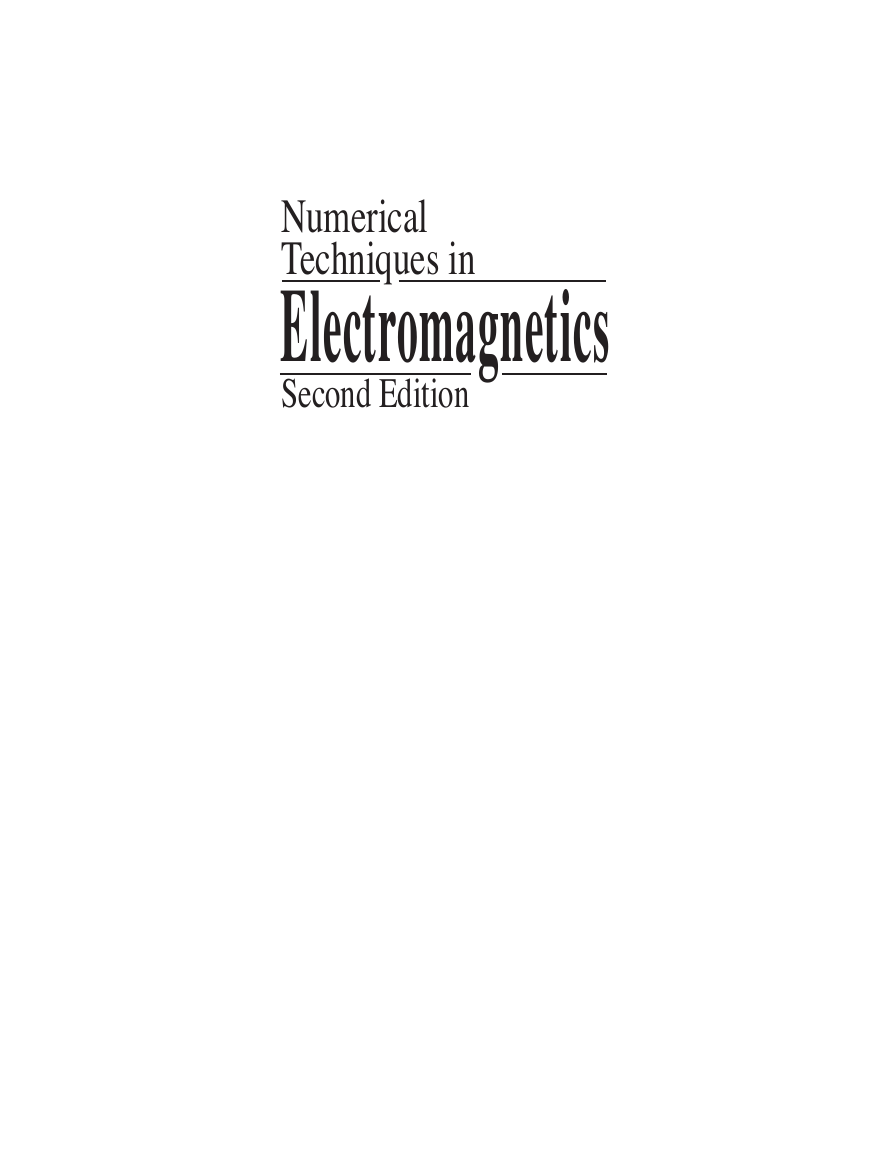
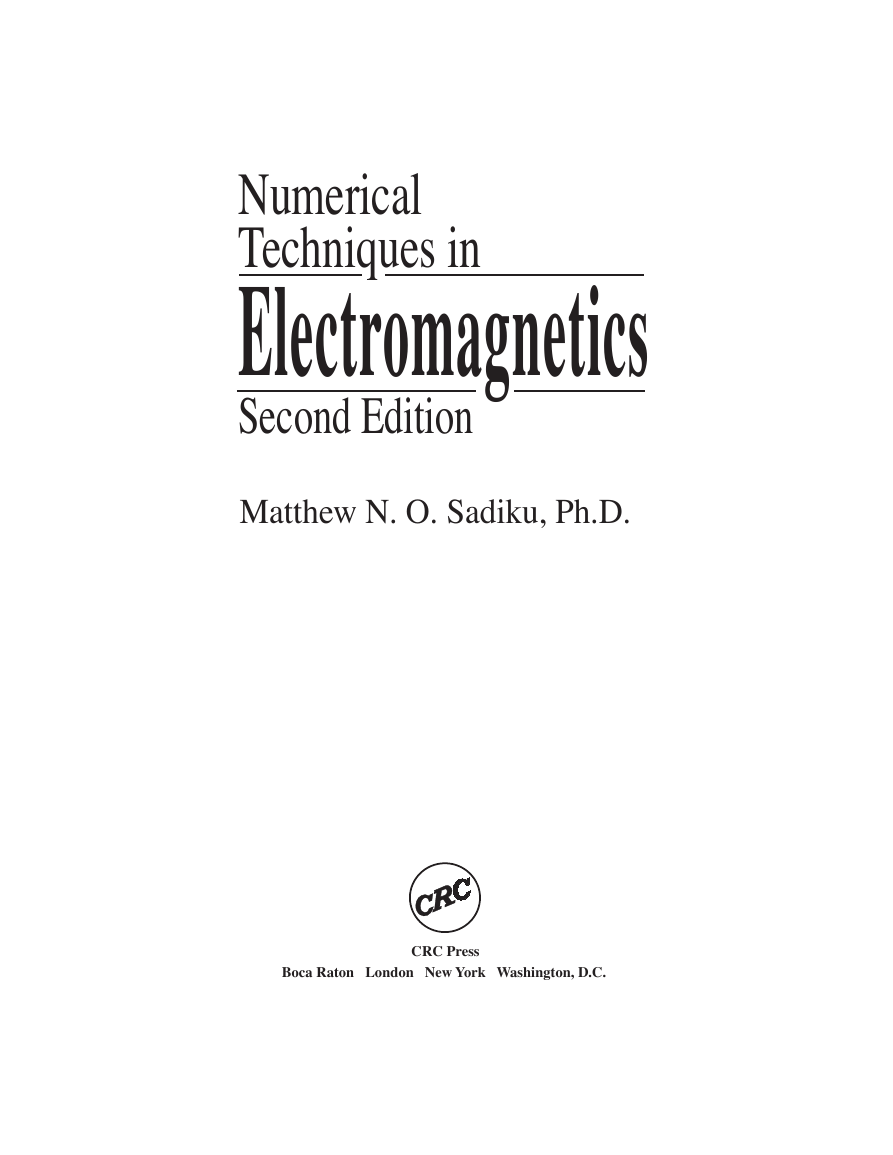
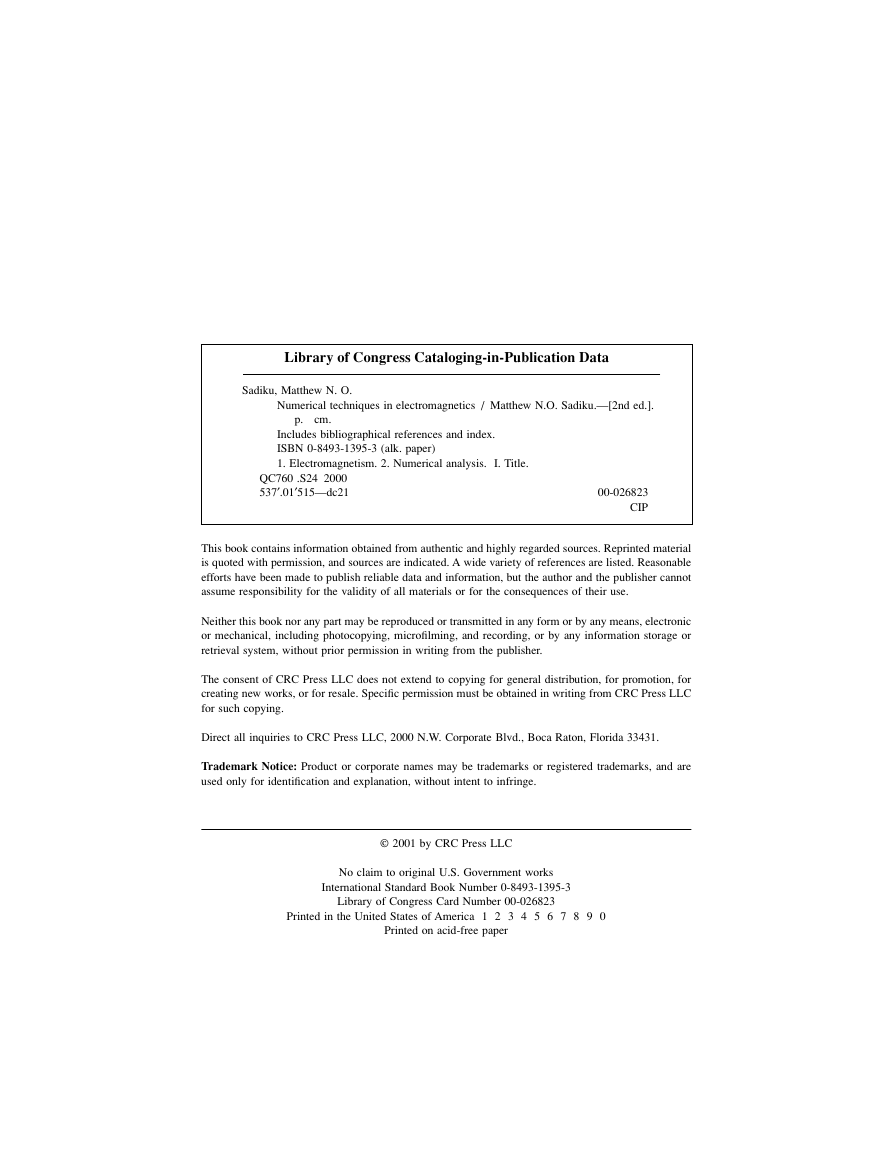
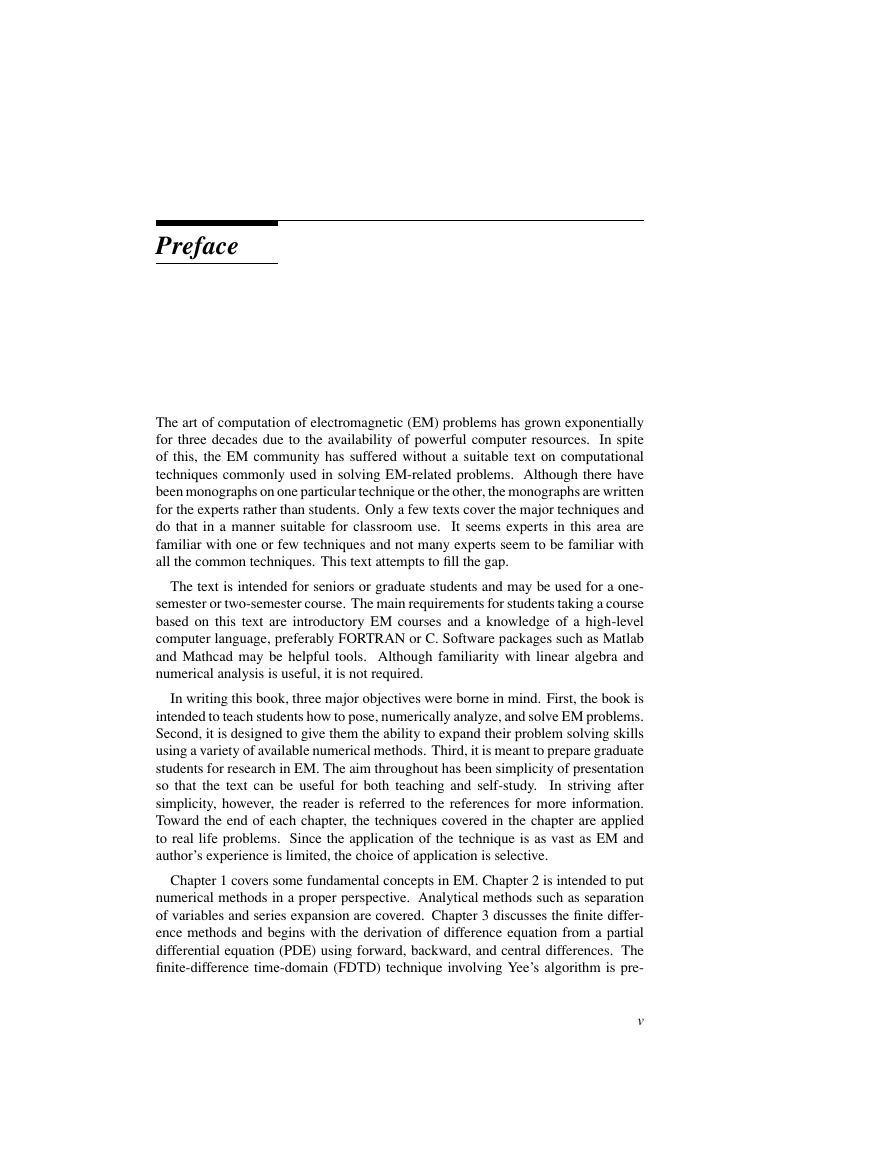
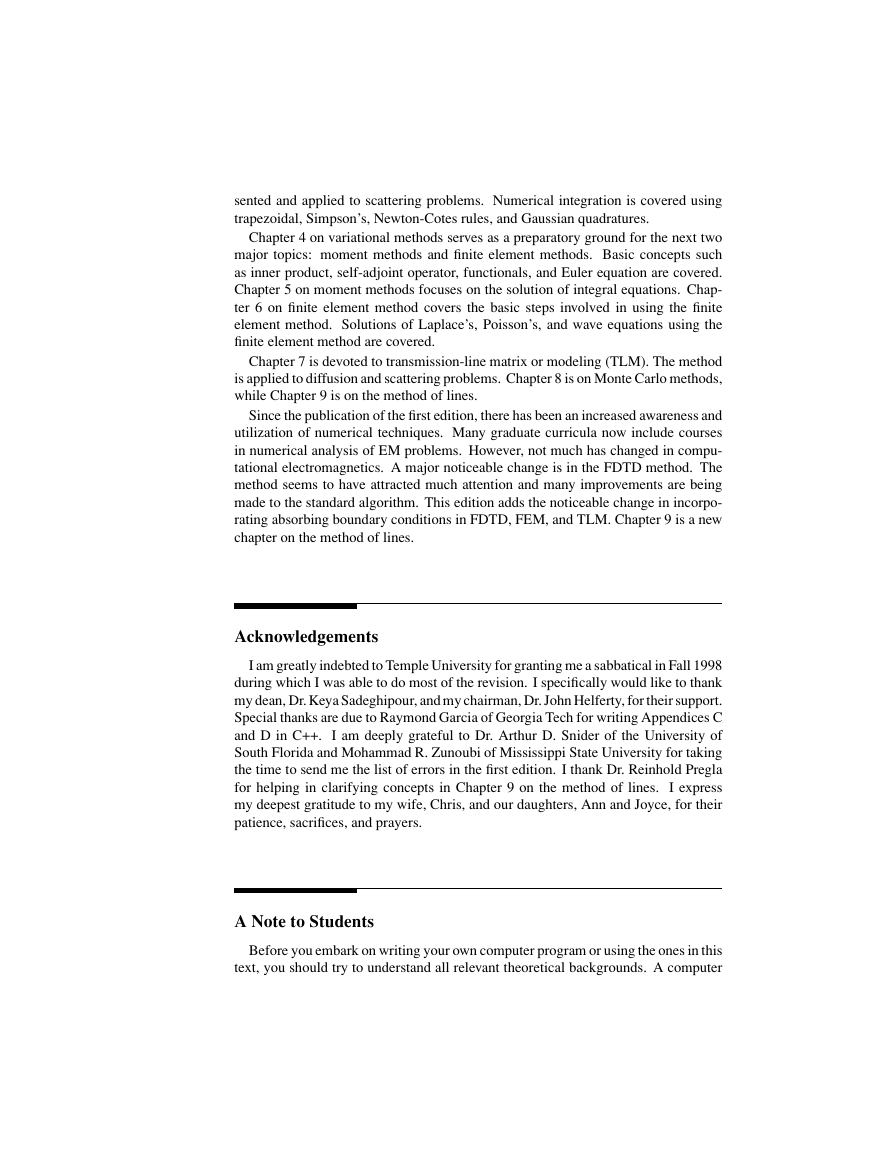


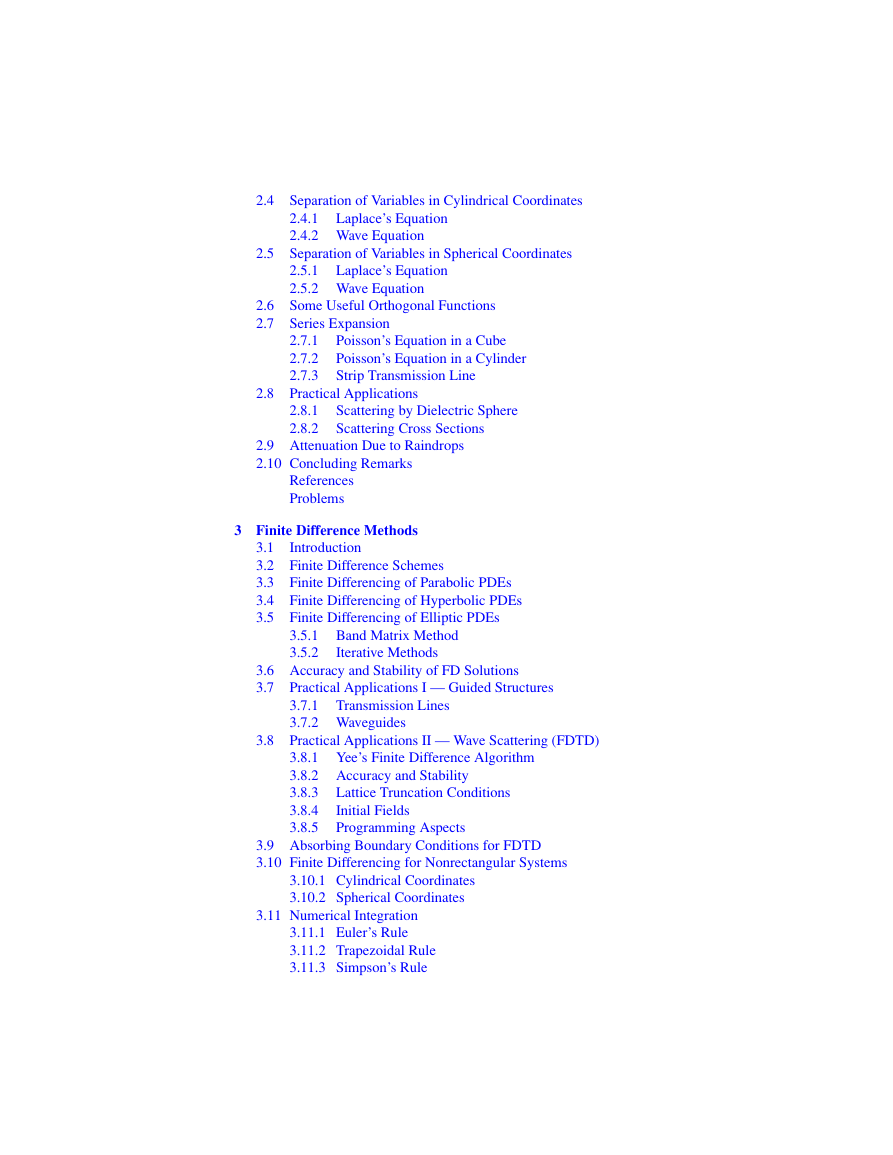








 2023年江西萍乡中考道德与法治真题及答案.doc
2023年江西萍乡中考道德与法治真题及答案.doc 2012年重庆南川中考生物真题及答案.doc
2012年重庆南川中考生物真题及答案.doc 2013年江西师范大学地理学综合及文艺理论基础考研真题.doc
2013年江西师范大学地理学综合及文艺理论基础考研真题.doc 2020年四川甘孜小升初语文真题及答案I卷.doc
2020年四川甘孜小升初语文真题及答案I卷.doc 2020年注册岩土工程师专业基础考试真题及答案.doc
2020年注册岩土工程师专业基础考试真题及答案.doc 2023-2024学年福建省厦门市九年级上学期数学月考试题及答案.doc
2023-2024学年福建省厦门市九年级上学期数学月考试题及答案.doc 2021-2022学年辽宁省沈阳市大东区九年级上学期语文期末试题及答案.doc
2021-2022学年辽宁省沈阳市大东区九年级上学期语文期末试题及答案.doc 2022-2023学年北京东城区初三第一学期物理期末试卷及答案.doc
2022-2023学年北京东城区初三第一学期物理期末试卷及答案.doc 2018上半年江西教师资格初中地理学科知识与教学能力真题及答案.doc
2018上半年江西教师资格初中地理学科知识与教学能力真题及答案.doc 2012年河北国家公务员申论考试真题及答案-省级.doc
2012年河北国家公务员申论考试真题及答案-省级.doc 2020-2021学年江苏省扬州市江都区邵樊片九年级上学期数学第一次质量检测试题及答案.doc
2020-2021学年江苏省扬州市江都区邵樊片九年级上学期数学第一次质量检测试题及答案.doc 2022下半年黑龙江教师资格证中学综合素质真题及答案.doc
2022下半年黑龙江教师资格证中学综合素质真题及答案.doc